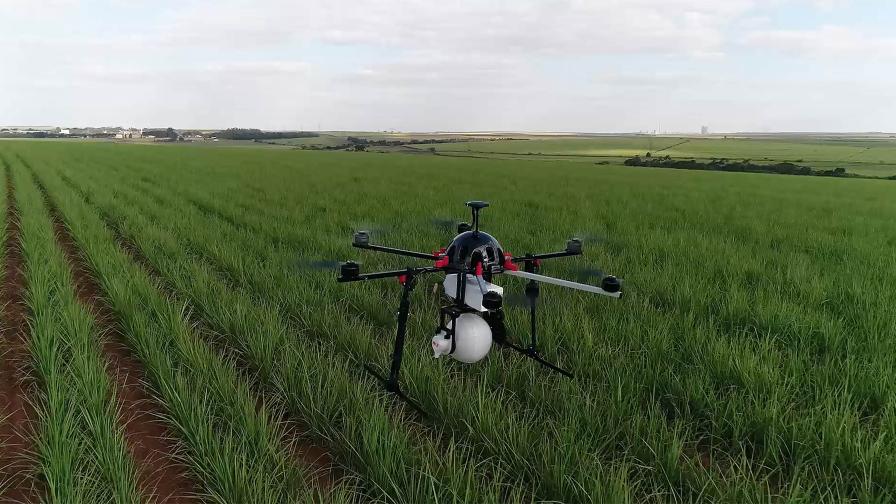Agriculture’s Connected Future: How Technology Can Yield New Growth
In an era defined by technological advancements, agriculture has embraced a connected future that harnesses the power of data, precision, and sustainability. As the global population continues to grow, the demand for food increases, making it imperative for farmers to optimize yields, ensure traceability, conserve resources, and reduce their environmental impact. Through the integration of cloud computing, precision agriculture, blockchain technology, remote sensing, and automation, the agricultural landscape is undergoing a transformative shift.
Here are a few innovative ways in which technology is revolutionizing farming practices, paving the way for a more efficient, transparent, and sustainable agricultural sector:
Data-Driven Decision Making: Harnessing the Power of Cloud Computing
One of the key pillars of the connected future in agriculture is the utilization of data stored in the cloud for decision-making purposes. By leveraging cloud-based platforms, farmers can access real-time information about weather patterns, soil conditions, and crop health. This data-driven approach enables them to make informed decisions regarding the optimal timing for planting, irrigation, fertilization, and harvesting. By leveraging historical data, farmers can also identify trends and patterns to improve their long-term planning and mitigate risks. With the ability to collect, analyze, and share data seamlessly, cloud computing has revolutionized the way farmers manage their operations, leading to increased productivity and efficiency.
Precision Agriculture: Optimizing Inputs, Maximizing Yields
Precision agriculture has emerged as a game-changer in modern farming practices. It involves the use of technological tools such as sensors, drones, and satellites to collect data on crops and soil conditions. These tools enable farmers to optimize the use of resources, such as water, fertilizers, and pesticides, resulting in increased yields while minimizing waste. For example, remote sensors can monitor soil moisture levels and nutrient content, allowing farmers to apply water and fertilizers precisely where and when they are needed. This targeted approach not only conserves resources but also ensures that crops receive the optimal conditions for growth, leading to higher productivity and improved profitability. Drones equipped with advanced imaging systems can identify crop stress, disease outbreaks, or nutrient deficiencies, enabling targeted interventions and preventing yield losses. By embracing precision agriculture, farmers can achieve a delicate balance between sustainability and profitability.
Blockchain Technology for Traceability: Ensuring Transparency and Trust
Blockchain technology holds immense potential in improving traceability and transparency in the agricultural sector. By creating an immutable and decentralized ledger, blockchain allows for the tracking of ownership records, supply chain transactions, and farm-to-fork traceability. This enables consumers to have confidence in the origin, quality, and safety of the food they consume. Farmers can record every step of the production process, from seed to harvest, ensuring full transparency and accountability. Blockchain technology also facilitates fairer transactions between farmers and buyers by eliminating intermediaries and reducing the risk of fraud. With blockchain’s capability to securely store and share information, the agricultural industry can build trust and establish stronger relationships between stakeholders, ultimately benefiting both farmers and consumers.
Remote Sensing and AI: A New Era of Monitoring and Analysis
Remote sensing, coupled with artificial intelligence (AI) technology, has transformed the way farmers gather information about their fields. With the help of satellites and UAVs (unmanned aerial vehicles), farmers can collect data 24 hours a day, providing an unprecedented level of monitoring and analysis. Advanced AI algorithms can process this data and generate actionable insights, such as identifying areas prone to pest infestations, optimizing irrigation schedules, or detecting early signs of crop diseases. Furthermore, remote sensing can be utilized to precisely apply chemicals and fertilizers, minimizing their environmental impact and reducing costs. By harnessing the power of remote sensing and AI, farmers can make informed decisions and take proactive measures to ensure crop health, maximize yields, and minimize inputs.
Automation and Improved Irrigation: Enhancing Efficiency and Sustainability
Automation has significantly enhanced agricultural practices, particularly in the realm of irrigation systems. Traditional irrigation methods often resulted in overwatering or underwatering, leading to inefficient water usage and reduced crop productivity. However, with the advent of automated irrigation systems, farmers can accurately control the amount of water applied to their fields based on real-time data. Sensors embedded in the soil can measure moisture levels, ensuring that crops receive the optimal amount of water at the right time. This precision not only conserves water but also enhances crop health and yields. Additionally, automation has extended to other areas of farming, such as the automation of machinery and equipment, reducing labour costs and improving overall efficiency.
Environmental Conservation and Carbon Sequestration: A Sustainable Approach
The connected future of agriculture also holds great promise in reducing the environmental and ecological impact of farming. By adopting sustainable practices and leveraging technological advancements, farmers can actively contribute to carbon sequestration and mitigate climate change. Precision agriculture techniques, such as targeted application of fertilizers and pesticides, minimize run-off and reduce water pollution. Additionally, the integration of cover crops, rotational grazing, and agroforestry can enhance soil health and sequester carbon dioxide from the atmosphere. Technology-driven solutions offer the potential to foster a more sustainable and regenerative approach to farming, benefiting both the environment and future generations.
The convergence of technology and agriculture has ushered in a connected future, enabling farmers to embrace data-driven decision making, precision agriculture, blockchain technology, remote sensing, and automation. This transformative shift empowers farmers to optimize yields, ensure traceability, conserve resources, and reduce their environmental impact. By leveraging real-time data and advanced tools, farmers can make informed choices, maximize efficiency, and enhance productivity. Furthermore, blockchain technology fosters trust and transparency in the agricultural sector, while remote sensing and AI provide invaluable insights for proactive interventions. As we continue to embrace these innovations, we pave the way for a more sustainable and efficient agricultural industry, ensuring a brighter future for both farmers and the planet.






